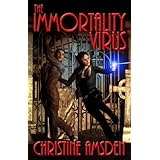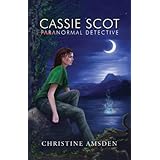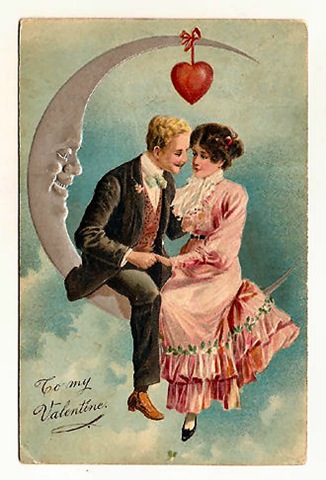http://www.stephanie-osborn.com
Today's guest blog on Romance as an element of modern storytelling is by Kenneth Johnson. Ken is an interesting individual. Principal Chief of the Florida Tribe of Cherokee Indians, Ken is also a polymath, a social scientist and culturalist. (J.R.R. Tolkien would have called him a "loremaster.") Ken Johnson is better known as "America's Culturalist." He writes primarily on issues of culture, conflict, and literary allegory. He is rather widely published in various magazines and webzines, and I thought his take on elements of modern storytelling would be intriguing and a bit different. I first "e-met" him after he read a couple of my books and contacted me; we met in person a few weeks later when I appeared at a convention local to him.
So let's sit back and see what Ken has to say.
~~~
Kenneth:
As a reader, the greatest feat that a writer can accomplish
is maintaining a point of view that captures, and retains, my interest
throughout a storyline. I am extremely
particular when it comes to emotional vs. sensual writing. Oft times, I could care less what the
character is feeling emotionally and instead I want the writer to be talking
about the textures, smells, sensations, etc. of the moment. As a reader, romance therefore messes things
up for me when it is employed. By this I
mean that romance tends to blur the lines and therefore it is very much like
dropping a flash bomb in a room. When
done right, it re-grabs the attention of the reader, re-focuses it, and uses
the romance as a carrier to a much more elevated storyline. However, there is far too much bad writing
out there and thus the romantic twist just ends up twisting the story so far
out of whack that the reader gives up on the book altogether.
Indeed, in many ways, romance is to a story what salt is
like to food. Too little can make for a
bland story. Too much can kill a
story. So, the writer has to get that
Goldilocks scenario of getting things “just right” – which can become a
daunting challenge.
Initially, the writer should spend a great deal of time contemplating
both the correct timing as well as the correct type of romance to use. The writer also needs to take into
consideration the culture of the reader as well as the culture that the
character represents. Finally, the
writer has a professional duty to contemplate and account for the impact that
said romantic twist will have on the reader.
It is on this latter concept of professional responsibility
to the impact of romance that I first want to address. Social scientists have well established a link
between visual and actual responses to both romantic and carnal/lustful
situations. Researchers have concluded
that the subconscious brain cannot distinguish between actually seeing
something happen and seeing something depicted in an audio-visual format on
television or in the movies. That is to
say, “You know, but you don’t know,” because your conscious brain is saying, “This
is a television show,” while your subconscious is like some teenager yelling
out, “They’re really getting it on!” Some
researchers are now beginning to hypothesize that this response to stimuli also
applies to the written word. A select
few are now going so far as to say that the written word may be even more
sensual than real life, meaning that the subconscious brain would be even less
likely to differentiate between writing and the real thing. This hypothesis takes into account the power
of human imagination. Thus, a literary
tryst may have a more physio-emotional impact on the reader than them seeing
the real thing. Such arguments have
specifically centered around juvenile-based comics, teen fiction, and even
young adult fiction due to the added issue of hormones which can potentially,
and adversely, “color” feelings and perceptions.
Of course, all of this is all well and good but it is still
just theory. Quite possibly the greatest
impact concern that a writer should have is the reader’s expectations. For instance, if one is reading a story
about an Amish farm, one really would not expect to read about how Helga got
ravished by Jacob and ended up covered in chocolate sauce in some barn. However, by the same token, Jacob taking
Helga by the hand, courting her, and stealing a kiss might be something that
the reader would more likely expect.
Therefore, the writer not only has to ask, “Would the character do
this?” but the writer should also consider, “How will my readers react if this
romantic twist plays out this specific way?”
Verily, it is the romantic type that matters as much, if not
more, than anything else. Ultimately,
all romance can be broken down into six types or categories: puppy love, teenage drama, young adult
passion, erotica, secondary romance, and golden romance.
By far the simplest concept to understand is the “puppy
love” concept where intentions are pure even though comprehension and motives
are likely underdeveloped in the plot line.
While it is the simplest to understand, this type of romance can be the
hardest to write because it is so underdeveloped in its motives, rationale,
etc. For this reason, most writers never
touch the topic unless in brief to provide a background story or some other
accentual element to a much greater storyline.
Teenage drama is a hot button issue now. Like puppy love, it lacks rationale – but
that is what makes it so great to use!
You can have love, hate, sorrow, etc. all tied in together because the
readers are teenagers and they are feeling the ravages of hormonal
changes.
Young adult passion is becoming a more popular segment these
days. Indeed, a number of young readers
are tired of carnal-focused romance stories and instead they want to experience
the more sophisticated nuances of genuine love between two people who are now
more mature and contemplating what to do with their lives.
By far the greatest bulk of American romance is almost
erotica based. Some of the storylines
being developed today are nothing short of something one would have expected
from historical erotica writers like Anais Nin.
Such stories hone in on the frustrations of life and provide a release
by one giving themselves over to cultural taboos. But, again, audience and character background
means everything. As a Native American,
I am used to intimate body parts being talked about in the casual. However, the talk of breasts and such, in
contemporary society, is deemed “intimate” and so this genre style can be
fickle – especially if the writer has a diverse readership or only typically
writes from one cultural vantage point.
Of course, after a while, love oft-times will start to fade. A growing trend in America is for middle-aged
people to have two or more previous marriages in their histories. So, romance writers have begun to focus on
trying to write about reigniting flames in old relationships, finding the right
relationship after a long-dead one has failed, etc.
.jpg) But, by far, my greatest love of romance storylines is the
golden romance where love did not fade and a couple has held on to each other
through the years to the point that it has blossomed into something that few
people ever experience. Using a real
world example, I remember hearing a story of the late President Reagan. He was in the final stages of Alzheimer’s disease
and he decided to go on a routine walk with his Secret Service detail. Walking past a person’s yard, he saw a
beautiful rose. When he tried to pick
it, a Secret Service agent politely grabbed his hand and said, “Mr. President,
this is not your home.” To that,
President Reagan replied, “I know, I am just getting this for my sweetie.” For me, this is real romance. I cannot imagine the horror of losing my
mind. It would devastate me. Yet, through it all, he still wanted to show
his wife love and affection with everyday simple gestures that contemporary
society seemingly finds no value in anymore.
For this reason, golden romance is, in a way, much like puppy love –
only matured.
But, by far, my greatest love of romance storylines is the
golden romance where love did not fade and a couple has held on to each other
through the years to the point that it has blossomed into something that few
people ever experience. Using a real
world example, I remember hearing a story of the late President Reagan. He was in the final stages of Alzheimer’s disease
and he decided to go on a routine walk with his Secret Service detail. Walking past a person’s yard, he saw a
beautiful rose. When he tried to pick
it, a Secret Service agent politely grabbed his hand and said, “Mr. President,
this is not your home.” To that,
President Reagan replied, “I know, I am just getting this for my sweetie.” For me, this is real romance. I cannot imagine the horror of losing my
mind. It would devastate me. Yet, through it all, he still wanted to show
his wife love and affection with everyday simple gestures that contemporary
society seemingly finds no value in anymore.
For this reason, golden romance is, in a way, much like puppy love –
only matured.
Naturally, nothing matters more than timing. You can have everything picked out and
properly accounted for with the readers and characters and still mess up a good
story with improper timing. Simply put,
you cannot have someone talking about Prussian military tactics one minute, and
then having them in a loving embrace the second, without first properly setting
the stage. This is to say that romance
happens on a very specific schedule.
Case in point, golden romance can never happen between two
teenagers because they are too young to understand it and appreciate it for
what it is. By the same token, two
middle-aged individuals cannot suddenly break out in teenage romance because
they should be old enough, and stable enough, that all of the, “I love you, I
hate you, let’s make out, oh I feel so ashamed, let’s do it again,” erratic
melodrama is well behind them.
 For this reason, the writer had better put serious thought
into what type of romance takes what type of timing. In the case of the Displaced Detective series, a lot of time had to expire for the two
main characters, Sherlock and Skye, to get to know each other. Even then, Sherlock had an inward battle he
had to fight where he was nothing short of a cultural fossil trying to live in
a new era with new norms. This all had
to play out. Indeed, it was not until
Skye nearly died that Sherlock had the emotional and traumatic stimulation
needed for him to uncharacteristically break out of his cultural shell and
engage in an atypical, erotic fashion.
Because both were older individuals, this type of romance had to quickly
crescendo and move on to a more stable type of romance more fitting of their age
and circumstance.
For this reason, the writer had better put serious thought
into what type of romance takes what type of timing. In the case of the Displaced Detective series, a lot of time had to expire for the two
main characters, Sherlock and Skye, to get to know each other. Even then, Sherlock had an inward battle he
had to fight where he was nothing short of a cultural fossil trying to live in
a new era with new norms. This all had
to play out. Indeed, it was not until
Skye nearly died that Sherlock had the emotional and traumatic stimulation
needed for him to uncharacteristically break out of his cultural shell and
engage in an atypical, erotic fashion.
Because both were older individuals, this type of romance had to quickly
crescendo and move on to a more stable type of romance more fitting of their age
and circumstance.
Verily, when done right, there is no greater way for a
writer to develop a storyline than by way of romance. By its very essence, it is
transcendental. However, more so than with
any other element, it has to be used in the appropriate amount, in the correct
manner, and at the optimal point in time to give the story the most bang for
the readers’ buck. Some of the greatest
stories of our era are won and lost in how the author handles romantic twists.
~~~
Interesting point of view, and I had not thought of dividing up the different "types" of love before, nor of how they necessarily provide for different timing!
If you'd like to read more of Ken's work, you can find a lot linked to his website:
-Stephanie Osborn
http://www.stephanie-osborn.com






